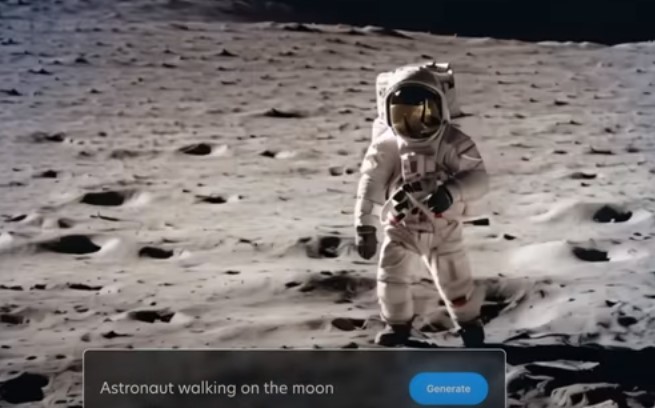In the ever-evolving landscape of artificial intelligence, Stability AI has emerged as a trailblazer with its groundbreaking product, Stable Video Diffusion. This state-of-the-art generative AI video model represents a significant leap forward in the quest to develop models catering to individuals of all kinds.

Generative Video with Stability AI: Generative Capacity: Up to 25 Frames from a Single Image
Stability AI’s Stable Video Diffusion boasts the remarkable ability to generate up to 25 frames from a single static image. This unprecedented generative capability opens up new horizons for content creators and AI enthusiasts alike.
Technical Specifications and Performance
The newly introduced tool comprises two image-to-video models, capable of producing videos ranging from 14 to 25 frames at speeds between 3 and 30 frames per second, all at a resolution of 576 × 1024. It also excels in multi-view synthesis from a single frame, offering fine-tuning capabilities on multi-view datasets. In external evaluations, these models have outperformed leading closed models in user preference studies, setting a new standard in generative video technology.
Research Preview and Future Availability
While Stable Video Diffusion is currently only available for research purposes, Stability AI envisions its potential applications in various sectors, including advertising, education, and entertainment. Prospective users can join a waitlist for access to an upcoming web experience featuring a text-to-video interface, showcasing the tool’s versatility and usability.
Quality and Limitations
The samples displayed in the research preview exhibit high quality, comparable to competing generative systems. However, it’s crucial to acknowledge certain limitations: the tool generates relatively short videos (less than 4 seconds), lacks perfect photorealism, and struggles with text control and legibility. Additionally, generating accurate depictions of people and faces remains a challenge.
Training Process and Legal Challenges
Stable Video Diffusion was trained on a vast dataset comprising millions of videos, fine-tuned on a smaller set. However, the source of the dataset is significant, especially considering Stability AI’s legal troubles with Getty Images, who sued the company for scraping its image archives.
Challenges and Market Dynamics
Despite the promising features of Stable Video Diffusion, Stability AI faces challenges in commercializing its Stable Diffusion product. Financial struggles, highlighted by TechCrunch, have raised concerns, compounded by the recent resignation of Stability AI’s vice president of audio, Ed Newton-Rex. His departure was in response to the use of copyrighted content to train generative AI models, shedding light on the ethical challenges inherent in the AI industry.

The Evolution of Stable Video Diffusion in Generative AI
Unveiling the Potential: Beyond Frames to Animation
As Stability AI conducts trials of its generative video model, Stable Video Diffusion, it reveals an exciting dimension—animation. The company proudly declares that its generative art is no longer confined to static images but can now come alive in the form of animated videos. This marks a significant advancement in the development of AI models catering to diverse individual needs.
Two Models, Multiple Possibilities
The newly unveiled Stable Video Diffusion tool is not a singular entity but comprises two image-to-video models. Each of these models has the capability to produce videos ranging from 14 to 25 frames, operating at speeds between 3 and 30 frames per second. The resolution of these videos is set at 576 × 1024, offering a visual treat to users. What sets these models apart is their ability for multi-view synthesis from a single frame and fine-tuning capabilities on multi-view datasets. Through external evaluations, Stability AI claims that these models outshine leading closed models in user preference studies, placing them at the forefront of generative video technology.
Comparative Excellence: Stability AI vs. Runway and Pika Labs
In a bold move, Stability AI compares its Stable Video Diffusion models to text-to-video platforms Runway and Pika Labs. Through external evaluations, it asserts that its models surpass the leading closed models in user preference studies. This competitive edge positions Stable Video Diffusion as a promising tool in the realm of generative video.

Unlocking the Potential: Research Preview and Future Prospects
Previewing the Future: Stability AI’s Research Preview Release
Stability AI’s decision to release Stable Video Diffusion for research purposes provides a glimpse into the potential future applications of this generative video tool. The research preview allows users to explore the capabilities of the tool, offering a hands-on experience with the emerging technology. It also signifies Stability AI’s confidence in the tool’s versatility and potential impact across various sectors.
Applications Across Industries: Advertising, Education, and Beyond
While Stable Video Diffusion is currently limited to research purposes, Stability AI envisions a broad spectrum of applications across diverse industries. The tool is anticipated to find utility in advertising, education, entertainment, and other sectors. This anticipation positions Stability AI as a pioneer in developing AI tools with versatile applications, catering to the evolving needs of different sectors.

Quality and Constraints: Navigating the Limitations of Stable Video Diffusion
Visual Excellence: Quality of Stable Video Diffusion Samples
The samples displayed in the research preview video showcase a level of visual excellence that aligns with or even exceeds that of competing generative systems. Stability AI’s commitment to maintaining high-quality output positions Stable Video Diffusion as a tool capable of generating visually impressive content.
Acknowledging Constraints: Limitations of Stable Video Diffusion
Despite its remarkable capabilities, it’s essential to acknowledge the limitations of Stable Video Diffusion. The tool, as of now, generates relatively short videos, typically less than four seconds. Additionally, it falls short of achieving perfect photorealism and struggles with text control and legibility. The challenge of accurately generating people and faces is also noted by Stability AI, showcasing the complexity of generative video models.
Behind the Scenes: Training Process and Legal Landscape
From Millions to a Select Few: The Training Process of Stable Video Diffusion
Stable Video Diffusion’s impressive capabilities are the result of meticulous training. The tool was trained on a dataset comprising millions of videos.
Decoding Google’s New Policy: The Impact on Inactive Accounts
FAQs
Can Stable Video Diffusion be used for commercial purposes?
As of now, the tool is only available for research, and commercial use is not supported.
What are the main limitations of Stable Video Diffusion?
The tool generates relatively short videos, lacks perfect photorealism, and struggles with text control and legibility.
How was Stable Video Diffusion trained?
It was trained on a dataset comprising millions of videos, with fine-tuning on a smaller set.
What sectors can benefit from Stable Video Diffusion?
Potential applications include advertising, education, and entertainment.
How can users get access to Stable Video Diffusion?
Prospective users can join a waitlist for access to an upcoming web experience featuring a text-to-video interface.
